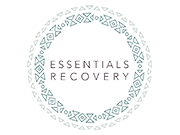Post-acute withdrawal syndrome or PAWS is a series of withdrawal symptoms that often appear just after a person’s physical withdrawal is complete. PAWS are primarily psychological symptoms, but they can also affect a person’s energy and motivation levels as well as their quality of sleep. Although completing physical detox is a major accomplishment, the challenges that immediately follow can be surprisingly intense.
This is especially true for people who attempt to detox on their own. Going “cold turkey” and lacking the right support greatly increases the risk of relapsing. When PAWS sets in, many people find that they’re no longer able to muster the willpower that’s necessary for continuing on. Experiencing PAWS without the benefit of medical intervention and mental health support can also be dangerous. Among some of the most severe symptoms of PAWS are suicidal thoughts and suicidal tendencies or suicidal ideations.
Many people use drugs and alcohol as a way to mute the mental and emotional pain of:
- Past or current trauma
- Low-self esteem
- Unprocessed emotions such as grief, guilt, or shame
- Co-occurring mental health issues
Without therapy and the sense of camaraderie that most rehab programs provide, many people find themselves facing these intense emotional challenges in full, and all alone. When paired with additional PAWS symptoms such as insomnia, lack of incentive, depression, and anxiety, the risk of returning to old, self-harming behaviors is high.
Why Post-Acute Withdrawal Symptoms Develop and How to Manage Them
After working so hard to make their way through physical detox, many people are disheartened to find that they actually feel quite miserable. Most imagine that they’ll have high levels of energy, a consistently bright outlook, and a mindset of success. After all, being sober is supposed to be preferable to living in addiction. Waking up to persistent feelings of doom or never being able to fall asleep at all can be disappointing, to say the least. The good news is that PAWS is completely normal and a relatively short-duration experience.
You won’t feel this way all of the time, and there are also things that can do to ensure mood balance, acceptably high levels of energy, and good sleep. While physical detox and the symptoms it includes are about clearing drugs or alcohol out of your body, post-acute withdrawal symptoms indicate that your brain and your brain chemistry are still recovering from long-term substance abuse.
When people use drugs or alcohol to “get high”, they’re artificially triggering powerful chemicals known as neurotransmitters. These are the “feel good” chemicals that drive the central nervous system’s reward center. They also play a hand in inspiring feelings of motivation, balancing moods, and helping people fall and stay asleep. Until these chemicals rebound or return to normal production and distribution, you’ll likely feel less than your best.
Getting medical and mental health support throughout this time can mean the difference between staying on course and experiencing a relapse event. In rehab, patients are given sleep support, medications and therapies for alleviating anxiety, depression, and panic, and other resources and services for making things a bit more comfortable and easier.
How Long Do PAWS Last?
The duration of PAWS is largely dependent upon the individual. Some people’s brains and bodies naturally rebound faster after quitting drugs or alcohol. For others, this process can take more time. However, on average, the worst post-acute withdrawal symptoms generally occur within the first one to three months after quitting. After approximately 60 to 90 days, dopamine, gamma Aminobutyric acid (GABA), and other important neurotransmitters will have fully rebounded, and most of a person’s brain functions and brain chemistry will be back to normal.
Although post-acute withdrawal symptoms often abate within just a few months, this doesn’t mean that they cannot recur. Some symptoms such as depression, malaise, and lack of motivation may periodically rear their heads throughout the first year of recovery. This is one of the top reasons why people are strongly advised to have plenty of post-treatment support and to avoid rushing through their initial addiction treatment.
Why Three-Month Programs Are Considered the Gold Standard
Committing to three full months of addiction treatment might seem like a lot. However, although many 30-day programs can be very effective, this duration of treatment doesn’t see patients through the very worst of their post-acute withdrawal symptoms. This is why three-month inpatient or intensive outpatient programs are often referred to as the “gold standard” in addiction treatment.
They give patients and their brains enough time to fully heal and rebound and to achieve a comfortable and sustainable state of mood balance and mental health. If you’re eager to start the recovery process and want help finding the right rehab program and the right post-treatment support, we’ve got you covered. Contact us now by calling 772-266-5320 to speak with one of our counselors.


